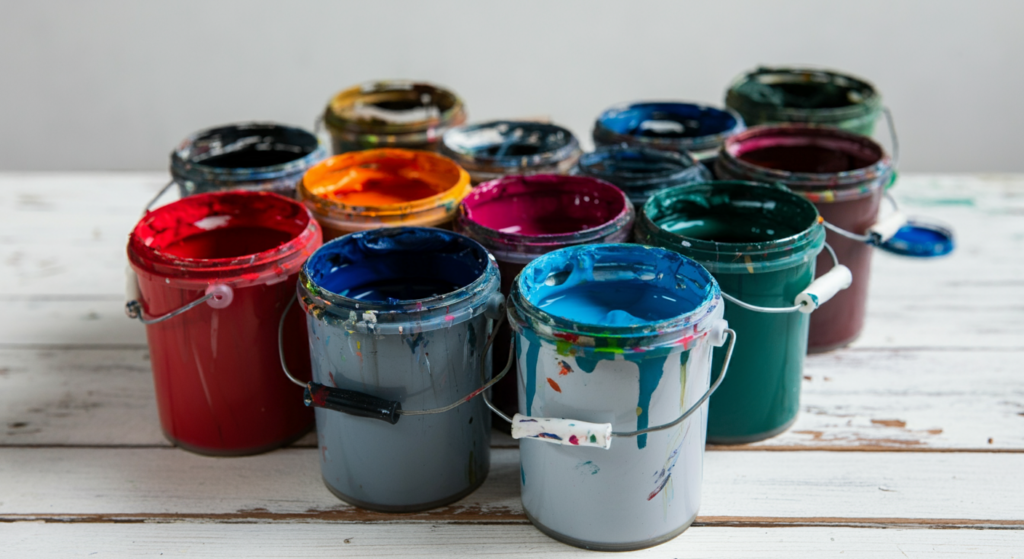Paint Calculator

Paint Calculator
Enter Paint Details
| Item | Value |
|---|---|
| Total Area to be Painted |
Need to calculate other construction elements?
🏗️ Use trench-quantity-calculator 🛠️ foundation-blockwork-calculator 🛠️ stirrup-calculator 🛠️ beam-stirrup-calculator🎨 Learn How to Use the Pointeed Paint Calculator
Accurately estimate the paint needed for your project, whether it's a room, office, or entire building. Follow this easy guide for DIY enthusiasts, painters, and contractors.
🌟 Overview
- Total Paint Needed – Total volume of paint required (in liters)
- 20-Liter Buckets Needed – Number of 20-liter buckets, rounded up
1️⃣ Enter Paint Details
- Total Area (m²) – e.g., 40
- Coverage Rate (m²/liter) – e.g., 10
- Number of Coats – e.g., 2
2️⃣ Click the Button
Press the Calculate button on the Pointeed Paint Calculator to generate results instantly.
3️⃣ Understand the Results
- Total Paint Needed (liters) = (Area × Coats) ÷ Coverage Rate
- 20-Liter Buckets Needed = Ceiling(Total Paint ÷ 20)
4️⃣ Sample Calculation
Input: 50 m² area, 10 m²/liter coverage rate, 2 coats
Results:
- 🧮 Total Paint Needed: 10 liters
- 🪣 20-Liter Buckets Needed: 1 bucket
5️⃣ Tips
- Measure surfaces carefully, subtracting doors and windows.
- Check the paint can for the coverage rate (e.g., 10-12 m²/liter for smooth surfaces).
- Use 2-3 coats for new walls, 1-2 for repainting.
- Buy 5-10% extra paint for touch-ups.
6️⃣ Benefits
- Saves Time – Quick and accurate calculations
- Reduces Waste – Buy only the paint you need
- Easy to Use – Perfect for DIY and professionals
Need more construction resources?
📘 Explore the Pointeed E-Book for Expert Tips 🧱 Use the Concrete Column Calculator
How do you determine the coverage rate (m2/ litre)
(1) Check the Paint Label: Most paint buckets will have the coverage rate listed on the label. This is usually given in square meters per liter (m²/L).
(2) Surface Type: Different surfaces absorb paint differently. For example, rough or porous surfaces like brick or stucco will absorb more paint than smooth surfaces like drywall.
(3) Number of Coats: The coverage rate will also depend on the number of coats you plan to apply. More coats mean more paint.
(4) Paint Type: Different types of paint (e.g., latex, oil-based) have different coverage rates.
(5) Application Method: The method you use to apply the paint (brush, roller, spray) can affect the coverage rate.
Here’s a basic formula to estimate the coverage rate:
Coverage Rate
=
Total Area to be Painted (m²) / Total Volume of Paint Used (L)
For example, if you have 10 liters of paint and you need to cover 100 square meters, the coverage rate would be:
Coverage Rate
=
100m²/10L
= 10m²/L
It’s amazing.
However, may I ask why wastage wasn’t put into consideration?
Thanks as you clarify my observation.